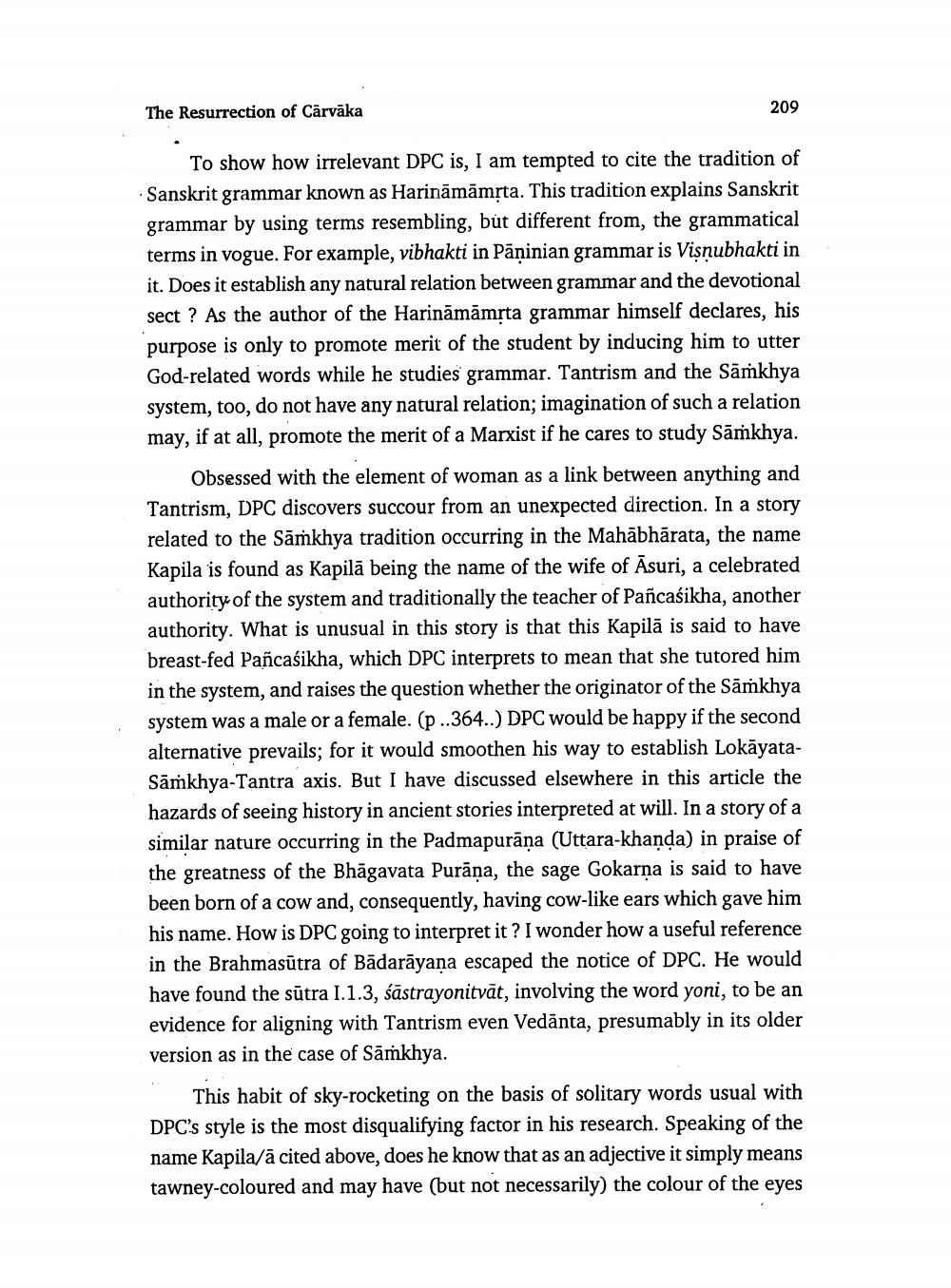________________
The Resurrection of Cärvāka
209
To show how irrelevant DPC is, I am tempted to cite the tradition of Sanskrit grammar known as Harināmāmrta. This tradition explains Sanskrit grammar by using terms resembling, but different from, the grammatical terms in vogue. For example, vibhakti in Pāṇinian grammar is Visnubhakti in it. Does it establish any natural relation between grammar and the devotional sect? As the author of the Harināmāmsta grammar himself declares, his purpose is only to promote merit of the student by inducing him to utter God-related words while he studies grammar. Tantrism and the Samkhya system, too, do not have any natural relation; imagination of such a relation may, if at all, promote the merit of a Marxist if he cares to study Sāmkhya.
Obsessed with the element of woman as a link between anything and Tantrism, DPC discovers succour from an unexpected direction. In a story related to the Sāmkhya tradition occurring in the Mahābhārata, the name Kapila is found as Kapilā being the name of the wife of Āsuri, a celebrated authority of the system and traditionally the teacher of Pancaśikha, another authority. What is unusual in this story is that this Kapilā is said to have breast-fed Pancasikha, which DPC interprets to mean that she tutored him in the system, and raises the question whether the originator of the Sāmkhya system was a male or a female. (p..364..) DPC would be happy if the second alternative prevails; for it would smoothen his way to establish LokāyataSamkhya-Tantra axis. But I have discussed elsewhere in this article the hazards of seeing history in ancient stories interpreted at will. In a story of a similar nature occurring in the Padmapurāņa (Uttara-khanda) in praise of the greatness of the Bhāgavata Purāna, the sage Gokarna is said to have been born of a cow and, consequently, having cow-like ears which gave him his name. How is DPC going to interpret it? I wonder how a useful reference in the Brahmasūtra of Bādarāyana escaped the notice of DPC. He would have found the sūtra I.1.3, śāstrayonitvāt, involving the word yoni, to be an evidence for aligning with Tantrism even Vedānta, presumably in its older version as in the case of Sāṁkhya.
This habit of sky-rocketing on the basis of solitary words usual with DPC's style is the most disqualifying factor in his research. Speaking of the name Kapila/ā cited above, does he know that as an adjective it simply means tawney-coloured and may have (but not necessarily) the colour of the eyes




